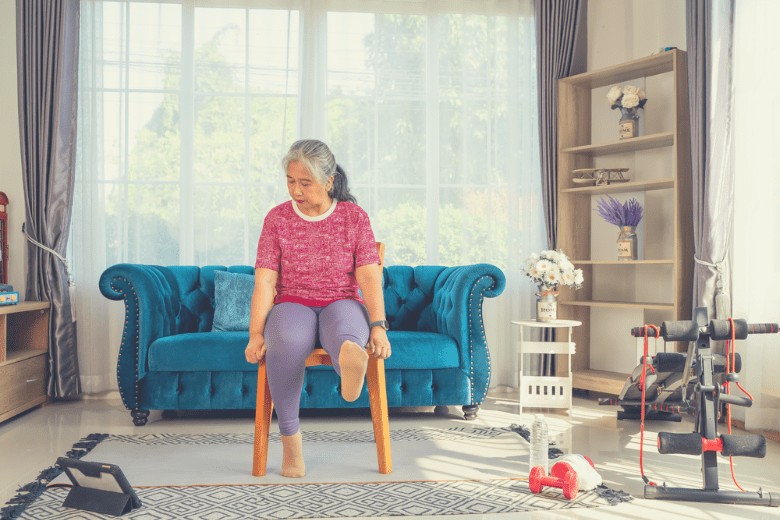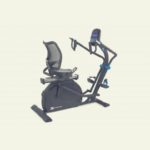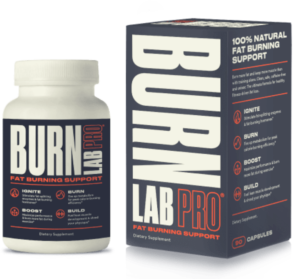If you spend long hours seated, especially in front of a desk, after some time, you may begin to feel stiff and uncomfortable, in which case you may crave exercise on the spot to help alleviate the discomfort.
Or perhaps you suffer from aches or physical limitations in general and find it more challenging to participate in traditional exercise.
In either case, you may have heard about and wondered what is seated cardio?
Seated cardio, also known as chair cardio, is aerobic exercise that is performed in a chair, which enables you to do it anywhere, and it’s also low impact on the joints, so it’s suitable for everyone.
What are the Benefits of Seated Cardio?
Sitting for long periods puts pressure on the vessels, thus squeezing them,
which obstructs blood flow to the muscles and other tissues that need it most.
This lack of circulation can then lead to various issues, including decreased blood flow to the cardiovascular system, which can put you at risk of heart problems.
It can also cause blood to pool in the legs, which can cause swollen or numb legs and, in some cases, even varicose veins.
Sitting in a fixed position for long periods can also lead to back pain, muscle aches, and even injuries, especially if when seated in an improper position.
It also helps improve posture, balance, coordination, flexibility, bone density, and muscle strength in seniors, which help prevent falls and injury.
Therefore, experts suggest when sitting long hours at work, you move or do chair exercises about every 30 minutes to help maintain adequate circulation throughout your body and prevent back pain and more.
Meanwhile, if you are a senior with mobility issues or you are recovering from surgery or an injury, it is recommended you do chair exercises in place of your regular workout to help improve walking, wound healing, and more.

How Does Chair Cardio Work?
Seated cardio utilizes many of the same movements as standing exercises, except you are sitting, which is easier on the joints.
Therefore, it provides many of the same benefits as traditional physical fitness, including increases the heart rate, improves blood oxygen levels, boosts metabolism and calorie burn, and more.
How Do You Do Chair Cardio?
There are various ways to move your body and get your heart rate pumping while seated, including seated jumping jacks.
To perform this move, with your bottom positioned on the edge of your seat, simply move your legs and arms quickly in and out like you would when doing standing jumping jacks.
Some other seated cardio exercises include:
- Chair Running
- Chair Marching
- Leg Lift and Twists
- Skater Switches
- Heel Touches
- Hinge and Cross
- Russian Twists
- Knee Taps
- HIIT Chair Cardio
According to fitness experts, when doing chair cardio, you want to sustain your sessions for about 20 to 30 minutes, which will enable you to increase your heart rate long enough to initiate calorie burning.
However, if you need to, you can start with short sessions and then work your way up to the ideal 20 to 30-minute mark.
For instance, you could start with a 5-minute session and then repeat it up to 3 times a day to help build up your endurance for a longer workout.
And then, after about a week or as you get more used to it, you can increase your sessions to 4 or more 8 to 10-minute sessions per day and so on until you are finally able to complete a full 20 to 30-minute session.
Is Seated Cardio Effective?
If you want to burn calories during exercise, you must participate in activities that get your heart rate up and keep it there for a sustained length of time, which chair cardio enables you to do by working your arms, legs, and abs.
The more intense the workout, the more you increase the heart rate and the more calories it burns, which can also help with weight loss.
Research shows that it is also effective for improving the body’s stability, which helps improve overall physical function in sports, work tasks, and everyday activities.
In fact, just sitting up straight in your seat alone helps strengthen various muscles in your torso that are responsible for supporting the skeletal system.
For chair exercises to be effective, they must also be done properly, which includes sitting tall and pulling your belly button in towards your spine as you perform the moves.
Your shoulders should also be tilted back and down, and keep your spinal neutral while doing the exercises to help cushion and protect the spine, as well as optimize your breathing and oxygen intake, which keep your blood vessels healthy.
Pressing your knees together throughout your workout also engages your inner thighs for increased leg toning.
Are There Any Precautions When Doing Chair Cardio?
Because chair cardio heavily engages the core, it is important to keep it engaged, which helps keep the back straight.
Otherwise, it can stain the lower back, which can lead to lower back pain, especially when doing ab twists.
It is also important to avoid bending the neck when performing the chair moves because it leaves the neck unsupported, which can also cause pain.
You need to also be sure you remain positioned in the center of the seat during your workout to help keep you stable and prevent you from falling.
Likewise, when doing exercises that require you to position your bottom on the edge of the seat, be sure you are securely in place before performing the move to avoid falling from the edge of the chair, which can injure the tail bone.
You could also use a bench to perform seated cardio; however, be extra mindful to follow the precautions since there is no back for added support, which can make doing the exercises even harder on your body.
Lastly, if you are pregnant, suffer from back, neck, knee injury, or another health condition, be sure to consult your physician first to ensure seated cardio is right for you.

How Soon Can I Expect to See Results With Chair Cardio?
Like all other forms of exercise, how soon you experience results depends on various factors, including how often you participate in the exercise, your rate of training, and your fitness goals.
However, in general, any form of cardio can significantly improve your heart rate and blood pressure in just a matter of weeks, but it may take up to a month or two to experience increased endurance.
Meanwhile, it may take up to six months to see changes in your muscle fitness; however, improvements in muscle strength can usually be felt within the first few weeks.
On the other hand, if your fitness goal is to shed some pounds, it is possible to see some results within weeks, provided you exercise at a moderate intensity or higher and you also follow a proper diet.
Regular exercise has also been shown to help boost the mood, which can be felt in as soon as the first few minutes of your workout and continue to improve over time and with the frequency of your aerobic activity.
In the meantime, some things you can do to help speed your results include find a chair cardio program or set of exercises that get you excited and motivated to work out, which will make you more likely to commit to it.
During your workout, focus on and enjoy the moves you are doing to help keep you energized, so you work harder, which will help you burn more calories. You might also try working out with family and friends to help keep you motivated to give your all.
Finally, plan regular fitness as part of your lifestyle, and stick to it, as research shows that people see the most benefits when they work out regularly, multiple times a week, throughout their lives.
What Kind of Chair Should I Use for Seated Cardio?
The best type of chair to use for exercising is one that is specially designed to support your back, such as an office chair. However, just about any sturdy, open-frame chair will do.
If you are using your chair for cardio, it might be best to select one without wheels, which can make it unstable as you move vigorously about.
However, chairs with wheels are ideal for doing ab work because they work similarly to balancing on a ball while exercising, which helps engage your core even more.
Or you could also use a steady bench, stool, or ottaman to do cardio work, and since it has more open space around it, you can be more creative with your workouts.
Are There Other Chair Exercises I Can do to Get Fit?
A chair not only offers a great way to get in some good cardio while at your desk or if you are sedentary due to an injury or more, but it can also be used to do various strength training moves to help build lean muscle mass, including seated press-ups.
To do this exercise, move forward almost to the edge of the seat and then place your arms on the sides of the chair with your palms gripping the chair.
Press down onto the seat with your arms lifting your body upward. Hold the position for a few seconds, and then lower your body back down onto the seat.
Repeat this move about 3 more times to complete one set.
Some other strength training exercises you can do using a chair include:
- Bent over arm lifts
- Chair planks
- Leg lifts
- Chair squats
- Seated hip thrusts
You can also use a chair for stability and support while performing various standing exercises, such as hip lateral raises, hip extensions, heel raises, and more.
However, because strength training exercises are mainly to help increase muscle mass, they may not sustain your elevated heart rate enough to burn lots of calories like cardio exercises.
Therefore, it is recommended you alternate between cardio and strength training throughout the week to help burn calories and build lean muscle.
You can also add free weights to your chair exercises to boost calorie burn and muscle strengthening.
A chair can also be used to perform modified yoga exercises, which provide many of the same benefits as traditional yoga, including helps increase flexibility and muscle toning, improve breathing, reduce stress, and promote overall well-being.
For instance, to perform downward dog, simply stand with the seat of the chair facing you and then move back a few feet.
Take a deep breath, and then bend down until your palms rest on the seat. Hold the pose a few seconds and then repeat about 3 times to complete one set.
Some other yoga poses that can be done using a chair include:
- the Dolphin pose
- The equestrian pose
- The Side stretch
- The Cobra pose
- The Eagle arm
- The Forward bend
Recommended Seated Cardio Machines
| Teeter FreeStep LT3 Recumbent Cross Trainer | XTERRA Fitness RSX1500 | Sunny Health & Fitness Magnetic Recumbent Exercise Bike |
 |
 |
 |
| If you’ve had bariatric surgery recently and/or your ability to workout normally has been impacted, then the Teeter FreeStep LT3 Recumbent Cross Trainer is perfect for you. | The XTERRA Fitness RSX1500 is perfect for seniors who want to stay active but don’t want to put too much stress on their knees. | The Sunny Health & Fitness Magnetic Recumbent Exercise Bike can accommodate 350 lbs and has an oversized seat – perfect for those with larger frames. |
 |
 |
 |
Final Thoughts
Chair exercise enables anyone to continue working out despite their physical condition, or you can simply use it to switch up your current workout routine with a more creative one.
It’s also a great way to keep your circulation flowing and relieve muscle tension while seated at your desk.
You can even do it while relaxing in front of the television, and they only take a few minutes per day, about 2 to 3 times per week, to start experiencing results.
You also don’t have to go out and purchase a new chair to exercise because just about any seat you already have in your home will do, including a weight bench, ottoman, stool, and more.
Therefore, if you are tired of putting off exercise waiting to go to the gym, join the countless other trendsetters and grab a seat in your home, and get started now.



